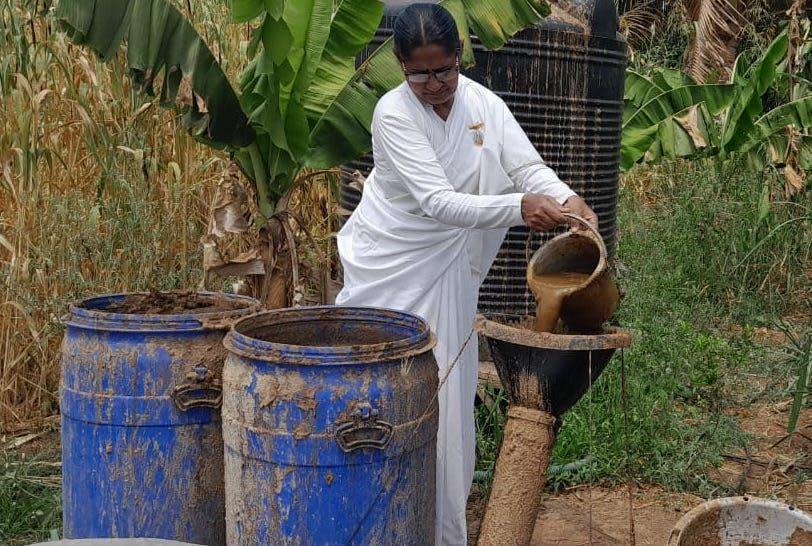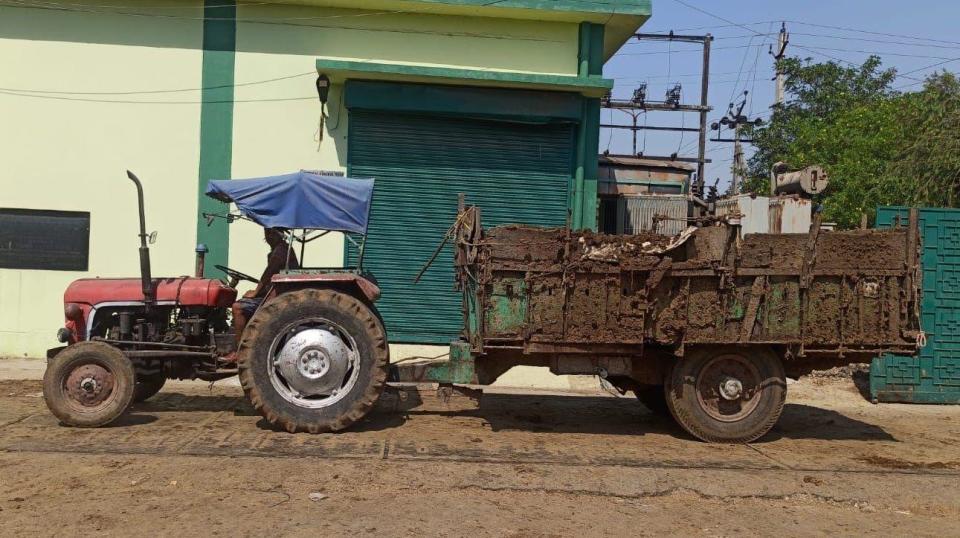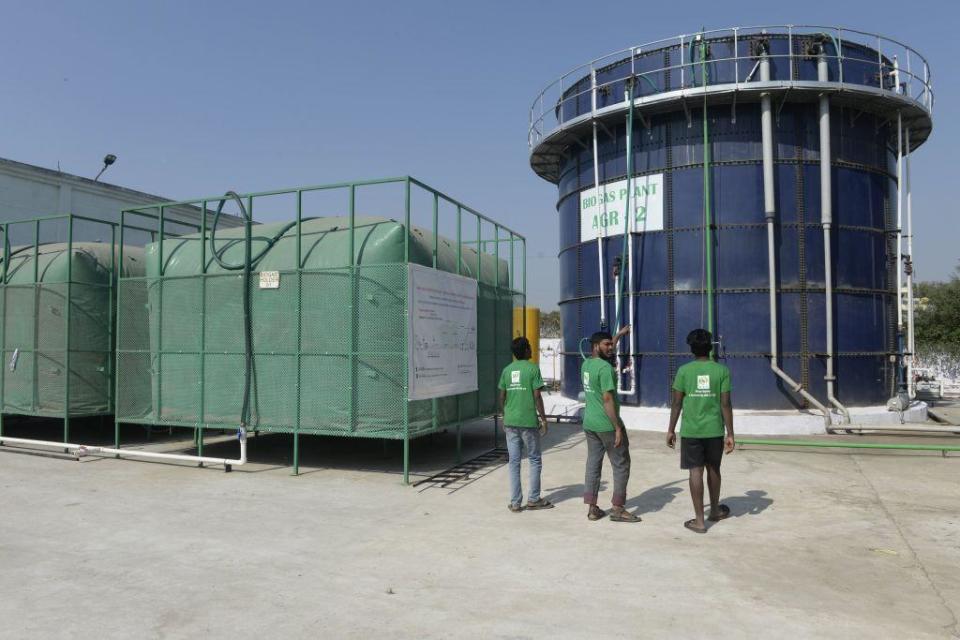Cow dung's key role in India's energy industry

Every day, with bare hands, Rukmini Baburao Kumbhar, collects around 50kg (eight stone) of fresh cow dung.
She is part of a spiritual group that runs a small ashram (a religious retreat) in a village in the north-western Indian state of Maharashtra.
Collecting cow dung is not, primarily, an effort to keep the place tidy. Instead, the cow dung is used to make biomethane.
"Fuel has become extremely expensive. Biogas was a good option. The only requirement was space and cows. We had both,” explains Ms Kumbhar.
Once collected, the cow dung is mixed with water and put in the bioreactor, where it produces enough methane for the ashram's kitchen.
Installed in March, it has replaced the 20 litres of natural gas that Ms Kumbhar used to buy every month.
It does involve collecting the cow dung, but she doesn't mind.
"In most of the rural parts of India, agriculture is the main occupation. So, touching the cow dung is not a big deal," she says.
Some of her guests are less enthusiastic, at least at first.
"Some women who come to stay with us from the city are repulsed by the smell, or if they are made to touch the cow dung. But we don’t force them. They eventually get used to it and start helping. The cows are of good quality, so the cow dung does not smell," she says.
Indian cattle produce around three-million tonnes of cow dung a day, according to data from the government' s policy body NITI Aayog.
The government wants more of that dung, and other agriculture waste, to be made into methane.
Biogas plants do that using a process known as anaerobic digestion, which involves feeding waste into airtight tanks where naturally occurring bacteria break down the organic matter.
The process produces a mixture of gases, primarily methane (around 60%) and carbon dioxide.
At the moment, India imports around half of its natural gas needs - money flowing abroad, which the government would rather see spent at home. And as the economy grows, India's demand for energy is only going to rise.
To spur the biogas industry, from 2025 the government has ordered gas suppliers to blend natural gas with 1% biomethane, rising to 5% by 2028.
As well as reducing India's imports of gas, biogas can also cut air pollution, as stubble that was previously burnt, can instead be sent to bioreactors.
In addition, the material left after the bioreactor has done its work can be used as fertiliser.
With state and federal government support, bigger and bigger bioreactors are being built.
Gas produced by such commercial facilities is compressed, making it easier to transport or use as a fuel in vehicles.
Asia's biggest compressed biogas (CBG) plant is in Lehragaga, in the northern Indian state of Punjab.
Opened in late 2022, it can turn 300 tonnes of paddy straw into 33 tonnes of biogas every day.
At the moment it is only producing eight tonnes a day, as there's not enough demand for the fuel.
That's partly due to its location - far from any big towns and major roads.

Location presents a different problem in Ludhiana, Punjab, where cow dung is a menace. With around 6,000 cows in the surrounding area, the city is a centre of dairy production, but dairy owners have been dumping waste straight into the public sewers, causing river pollution.
The situation would probably be worse, if dung was not being diverted to a large biogas reactor at the Haibowal Dairy Complex, which can process 225 tonnes of dung a day.
It was built in 2004, but demand is such that there are plans to more than double the output of the biogas facility.
Rajiv Kumar is responsible for collecting cow dung from the surrounding area. He remembers the early days when farmers could not really understand why he wanted the waste.
"It was hard to convince them to sell cow dung to us. They used to look at us with suspicion. But now waste has created a source of income for them and they don’t have to do anything, so its win-win situation for them,” he says.
The work is difficult, but valuable to the local community.
“This cow dung is a mix of cows and buffalos, so, the smell is repulsive, but we all need money at the end of the day to survive.”

Baljit Singh is one of those who has embraced the opportunities in biogas.
He comes from a family of farmers in Punjab, growing wheat and rice. When he saw the biogas plants being built he realised that there was an opportunity. Mr Singh started by collecting the stubble left over from his family's harvest and selling it to the plant.
Then he went and tried to persuade other farmers to give him their husk.
"It was not an easy journey. As the pressure on farmers is high to clear the land for the next sowing, they preferred burning the husk. I convinced them that it is a money-making opportunity for them," he explains.
But it has become a sizeable business. Today Mr Singh has around 200 people working from him collecting farming waste from 10 villages.
"It’s a labour-intensive job. Before the harvest begins, I visit most of the villages to convince the farmers to sell me their agriculture residue. It has to be dry so we have to be very quick.
“Residues are chopped or shredded to a specific size for efficient digestion in the biogas plant. During collection we are very careful about the moisture content and contaminants.”
More Technology of Business
Despite the successes some question whether biogas can ever become a mainstream fuel.
In urban areas the lack of space and the smell make biogas a difficult proposition, says Kiran Kumar Kudaravalli from SKG Sangha, a non-profit organisation focussed on renewable energy.
Meanwhile in poorer rural areas, people would be put off by the cost.
"The fuel comes to them from the forest or agricultural land, which is available for free. So, they would not like to pay too much for the fuel, and one can not charge them for installing biogas plants," Mr Kudaravalli says.

